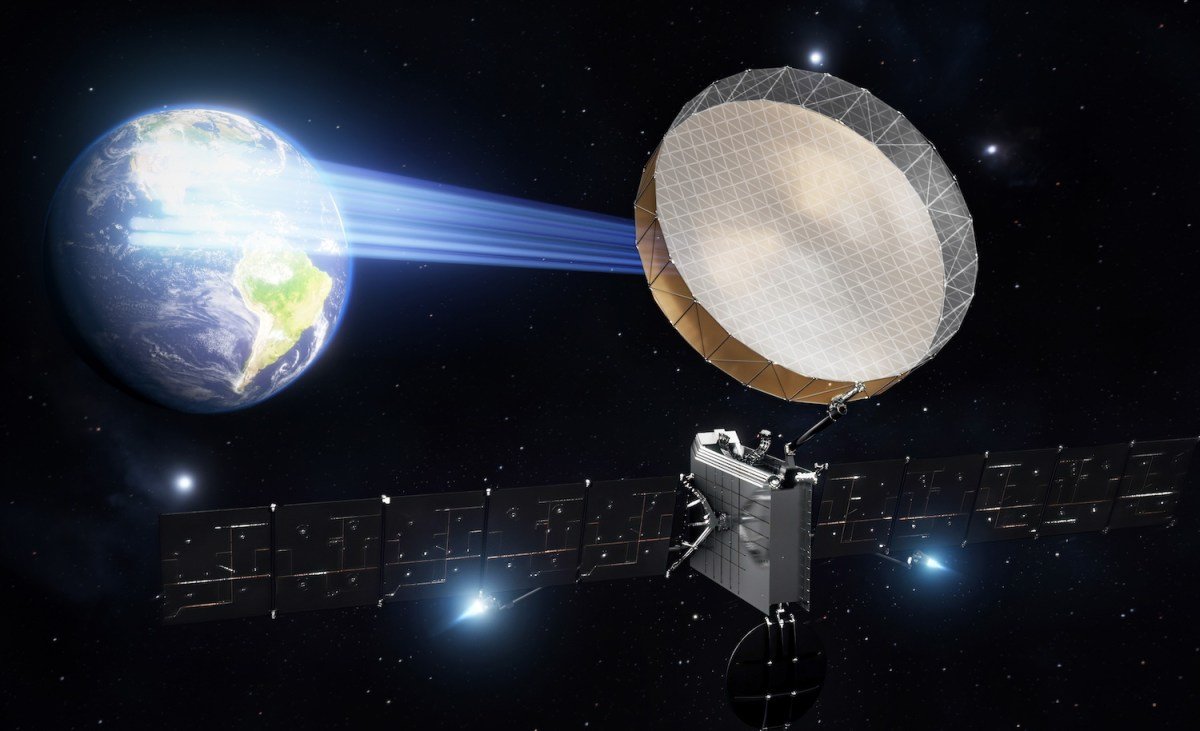Astranis has revealed their newest technology: a revolutionary generation of communication satellites that will deliver broadband services to customers on Earth from geostationary orbit. These satellites are not only faster and smaller than any others currently in orbit, but they also pave the way for a new future in orbital communications – one where customers, both government and commercial, will have their own private satellite network.
Dubbed “Omega”, these satellites will provide an impressive 50 gigabits per second of bandwidth each in both civilian and military Ka bands, making it clear that they have dual-use capabilities.
Astranis specializes in building and operating relatively small broadband satellites in high orbits, and selling their capacity to telecom and internet service providers. Currently, the company has contracts in place to provide capacity to providers in Mexico, the Philippines, Alaska, and southeast Asia.
But unlike traditional communication satellite technology, Astranis takes pride in the compact size of their GEO satellites. These satellites are normally large and easy to track, making them potential targets for attack. But with Astranis’ smaller, more advanced satellites, this risk is greatly minimized.
“We need to move to a more resilient architecture. No more big, fat, juicy targets!”
– Astranis CEO John Gedmark
The improved bandwidth of these satellites is due to the use of next-generation Astranis software-defined radios, along with a more efficient deployment of signals. While the previous generation used coherent beams, similar to spotlights, the new generation uses a big LED array, providing a more even signal over a larger area. According to Gedmark, the potential number of points that can be served is in the millions, depending on the customer and use case. Additionally, these satellites utilize existing Ka-band receivers, eliminating the need for a bespoke antenna like Starlink’s.
When asked about the future of the orbital communications market, Gedmark expressed high optimism. He believes that the demand for bandwidth is essentially unlimited, especially at the prices Astranis is able to offer, which are substantially lower than traditional GEO data connections.
Notably, Astranis has also ensured that their satellites will have the capability to support specific waveforms that are of interest to the Department of Defense, such as the Protected Tactical Waveform. This means that their satellites can still provide capacity even in contested environments, making them a valuable asset to military operations.
Astranis’ proposal for orbital communications – using many small satellites in GEO – is a major departure from traditional technology, which relies on large, expensive, and non-maneuverable satellites. This vulnerability makes traditional GEO satellites easy targets for adversaries.
Like their current satellites, Omega will have the ability to maneuver in GEO using all-electric propulsion. This propulsion method is more efficient, and allows the satellites to maintain their position for at least 10 years, as well as perform various repositioning maneuvers. And as technology continues to advance, Astranis plans to have the next generation of satellites ready to replace their current ones.
But perhaps the most impressive aspect of Astranis’ technology is their plan to offer dedicated satellites for their customers. While nations may have their own dedicated spy satellites funded by defense budgets, multinational corporations typically do not have that kind of budget or satellite management departments. Astranis aims to change that by offering “satellite as a service”, where a single customer can have a satellite completely or partially dedicated to their use for an upfront and monthly fee.
While Gedmark did not disclose any names of interested companies, he did suggest that energy and oil and gas companies would benefit greatly from this service due to their widespread operations and need for secure satellite data. And although the company currently has no plans for the cislunar market, Gedmark acknowledges the huge potential for future growth in that area.
Astranis plans to complete the first Omega satellite in 2025 and launch it into orbit in 2026. They anticipate launching around six satellites initially, with the potential to increase production to 24 per year in the future.








